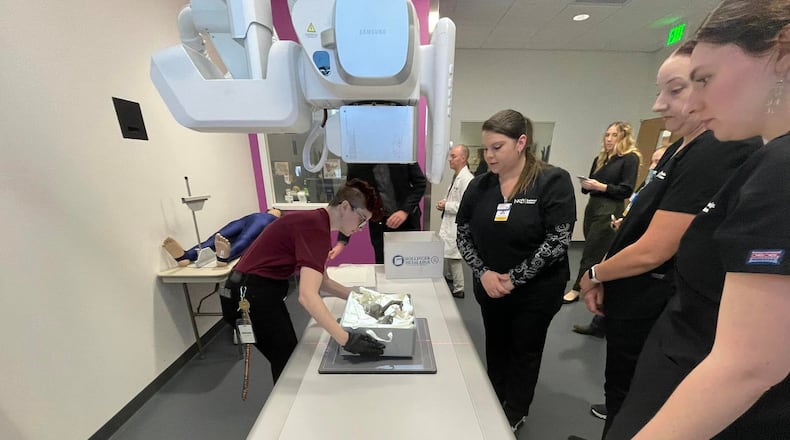The artifact was taken to Northern Kentucky University on Oct. 13 to get an x-ray and CT scan by radiology students at the College of Health and Human Sciences.
Natalie Fritz is archivist and outreach director for the Clark County Historical Society at the Heritage Center.
“As something that’s been a part of our collection for so long — 117 years — I know that I’m personally excited to have some answers,” Fritz said.
NKU students and officials “seemed fairly certain” that the “scales” on the tail are fish scales and that the jaw appears to be a fishbone jaw that’s set into the face.
“We agreed it looks similar to a small capuchin monkey. I’ve always told people it’s a monkey fish, so it’ll be great if we can get confirmation,” Fritz said.
From the x-rays and scans, NKU could tell there are a few different wooden rods holding the artifact together through the middle, they could detect metal as it looks like metal is holding the “claws” together, cotton stuffing in the body cavity, in which the section along the back that’s split seems to be the original seam where it was stuffed, and likely that some sort of papier-mâché structure is holding it all together.
Fritz said it was “really interesting” to watch the students work on the artifact and adjust the angles to get clear images, applying what they’ve learned.
“I think this gave them good experience with something out of the ordinary to what they are used to dealing with, so they had to apply the principles they’ve learned. It was neat to watch them work and their instructors were wonderful helping them along throughout the process,” she said.
The CT scans and x-rays have now been sent to the Cincinnati Zoo and Newport Aquarium to see if they can provide more definitive information about the specific makeup of the artifact.
Since sharing this project, Fritz said they’ve had people commenting on Facebook and sharing their memories of seeing the Fiji Mermaid on display in Memorial Hall and at the Heritage Center. She said they also learned from someone that it may have been on display in the window of a downtown bar on Fountain, which they “hadn’t heard before,” and hopes more stories will be shared so they can learn more about it.
The mermaid was donated in September 1906 by someone named L.C. Bishop, who was in the Navy and purchased it in Japan. It has been in the Historical Society’s cabinet of curiosities display, which was removed and has been stored in the front of the museum until the items are reinstalled somewhere else.
“After doing more research about the original donor, L.C. Bishop, we learned that he served in the Navy in the 1870s, so if he bought this while in the service, it makes it much older than 1906,” she said. “We’re hoping we may be able to find more info about if it was displayed and shared around elsewhere before it was donated to us.”
Once the artifact is back, the Historical Society is planning to reinstall the Cabinet of Curiosities case. It used to be a display in the back of the building that paid homage to the original museum, when they collected and displayed things that were “neat,” but not necessarily related to local history, Fritz said. It include a lot of natural history items such as mastodon bones, birds and things collected from world travels.
Fritz said their hope is that when they bring the exhibit back, they can provide more information and background about the Fiji Mermaid, and use images and videos from NKU in a more interactive and engaging way.
About the Author

